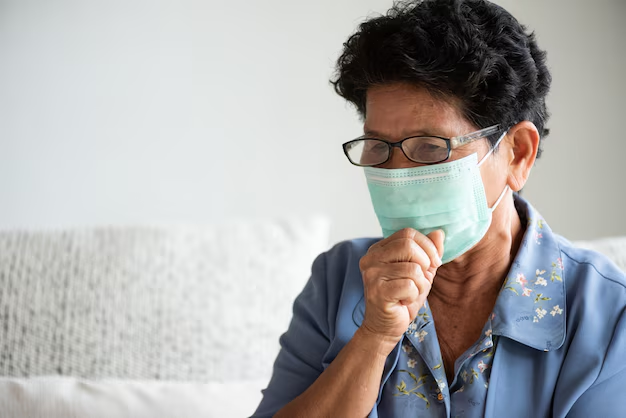What You Need to Know About Pneumonia Without a Fever: Is It Dangerous?
When we think about pneumonia, many picture a severe illness marked by high fever, cough, and difficulty breathing. But what if there's a condition where you have pneumonia without one of its most common symptoms, fever? Could such a condition be dangerous? Understanding pneumonia without fever is crucial for anyone concerned about their respiratory health or that of their loved ones. Let's dive into this pertinent topic affecting many worldwide.
Understanding Pneumonia: The Basics
What is Pneumonia?
Pneumonia is a lung infection caused by bacteria, viruses, or fungi. It leads to inflammation of the air sacs (alveoli) in one or both lungs, which may fill with fluid or pus, causing symptoms like coughing, fever, chills, and difficulty breathing.
Typical Symptoms of Pneumonia
Common symptoms of pneumonia usually include the following:
- High fever
- Persistent cough, often with phlegm
- Shortness of breath
- Chest pain, especially when breathing deeply or coughing
- Fatigue
- Chills
- Loss of appetite
These symptoms are the body’s way of signaling an infection and are integral for early detection and treatment.
Without Fever: When Pneumonia Hides in Plain Sight
Is Pneumonia Without Fever Possible?
Yes, it is possible. This type of pneumonia is often referred to as "atypical pneumonia" or "walking pneumonia," where the symptoms are milder, and the individual might not feel severely ill. Fever may be absent in such cases, making diagnosis challenging because fever is a typical indicator of infection.
Why Would Fever Be Absent?
Several factors can lead to the absence of fever in pneumonia cases:
Immune System Variations: Some individuals, especially the elderly or those with weakened immune systems, might not exhibit a fever even when the body is fighting an infection.
Medication: The use of antipyretic medication (like acetaminophen or ibuprofen) can suppress fever even if pneumonia is present.
Chronic Illnesses: Individuals with chronic health conditions may have an atypical response to infections, including the absence of fever.
Signs to Watch For
In cases without fever, other symptoms may become more pronounced. Look out for:
- Increased Fatigue: Notable exhaustion disproportionate to daily activities.
- Persistent Cough: A protracted, dry cough that doesn't subside.
- Shortness of Breath: Difficulty breathing even with minimal exertion.
- Subtle Changes in Cognition: Confusion or altered mental status, especially in the elderly.
The Risks and Concerns
Is It Dangerous to Have Pneumonia Without Fever?
The lack of fever can make pneumonia more insidious because individuals may delay seeking medical attention, believing they aren't that sick. This can lead to several risks:
Delayed Diagnosis: Without the prompt sign of fever, diagnosis might be delayed, allowing the infection to worsen.
Complications: Undetected pneumonia can lead to severe complications such as pleurisy (inflammation of the layer covering the lungs), lung abscesses, or respiratory failure.
Increased Spread: Individuals might not take the necessary precautions to prevent spreading the infection without recognizing they are sick.
Populations at Risk
Certain populations are more prone to develop pneumonia without fever and should be extra cautious:
Elderly: Higher risk due to aged immune systems and potential for atypical symptom presentation.
Immunocompromised Individuals: Those with weakened immune defenses may exhibit atypical symptoms.
Chronic Illness Sufferers: People with diabetes, heart disease, or chronic lung conditions may experience pneumonia differently.
Diagnosis and Treatment Pathways
Getting Diagnosed
Diagnosis becomes essential to manage pneumonia effectively, even if fever is absent. The process typically involves:
- Medical History and Physical Exam: Assess other symptoms or risk factors.
- Chest X-ray: Confirms pneumonia by showing inflamed areas in the lungs.
- Sputum Test: Identifies the cause of infection, guiding treatment decisions.
- Blood Tests: Help evaluate the body’s response to infection.
Treatment Approaches
While specific treatments should always be prescribed by healthcare professionals, common strategies include:
- Antibiotics or Antivirals: Depending on whether the cause is bacterial or viral.
- Rest and Hydration: Ensures the body is equipped to fight off the infection.
- Symptom Management: Addressing cough, body aches, and other discomforts.
Prevention and Management
Preventive Measures
Prevention is key to reducing the risk of pneumonia, with several actionable steps including:
- Vaccinations: Stay updated on pneumococcal and flu vaccines.
- Good Hygiene: Regular handwashing and respiratory hygiene can impede infection spread.
- Healthy Lifestyle: Balanced diet, regular exercise, and adequate sleep bolster immune health.
When to Seek Medical Attention
Without the alarm of fever, it's imperative to listen to your body and act upon concerning symptoms. Seek medical attention if you experience:
- Persistent and worsening cough
- Significant alterations in breathing or cognitive function
- Inexplicable fatigue that inhibits daily activities
Navigating Life with Respiratory Awareness
Pneumonia without fever poses a unique challenge but isn't devoid of critical warning signs. Understanding these signs aids early intervention, minimizing health risks. Remember, knowledge and timely medical assessment are your best allies in tackling respiratory conditions. Always consult with healthcare professionals when respiratory symptoms change or persist.
Quick Guide to Navigating Pneumonia Without Fever
- 📝 Recognize Warning Signs: Persistent cough, shortness of breath, fatigue.
- 🔍 Don’t Ignore Symptoms: Seek medical advice even if fever isn't present.
- 👵🏻 Special Concern for Vulnerable Groups: Extra vigilance for elderly and those with immune deficiencies.
- 💉 Prioritize Prevention: Regular vaccinations and good hygiene practices.
- 🏃♂️ Healthy Habits: Promote immune resilience with a balanced lifestyle.
By staying informed and proactive, you can reduce risks and foster greater respiratory health awareness. 🫁✨

Related Articles
- a Typical Pneumonia
- Can a Cold Turn Into Pneumonia
- Can a Sinus Infection Turn Into Pneumonia
- Can Amoxicillin Cure Pneumonia
- Can Amoxicillin Treat Pneumonia
- Can Baby Oil Cause Pneumonia
- Can Bronchitis Turn Into Pneumonia
- Can Covid Turn Into Pneumonia
- Can Doxycycline Treat Pneumonia
- Can Flu Turn Into Pneumonia